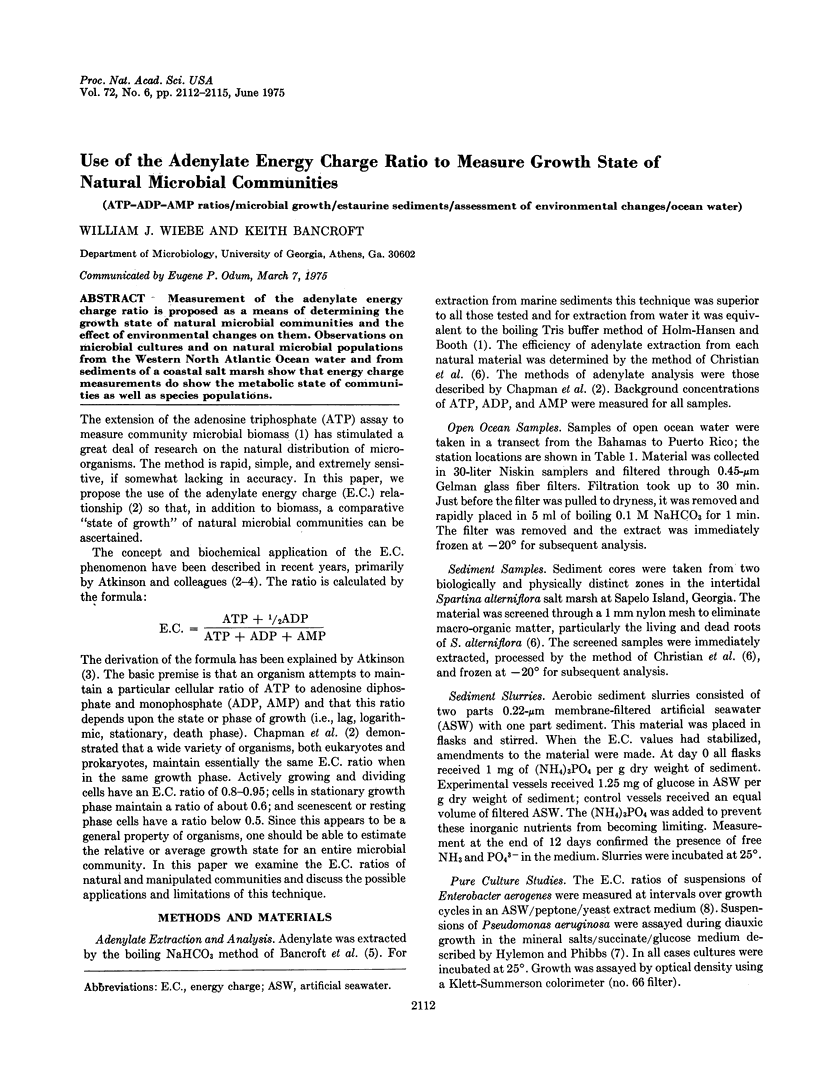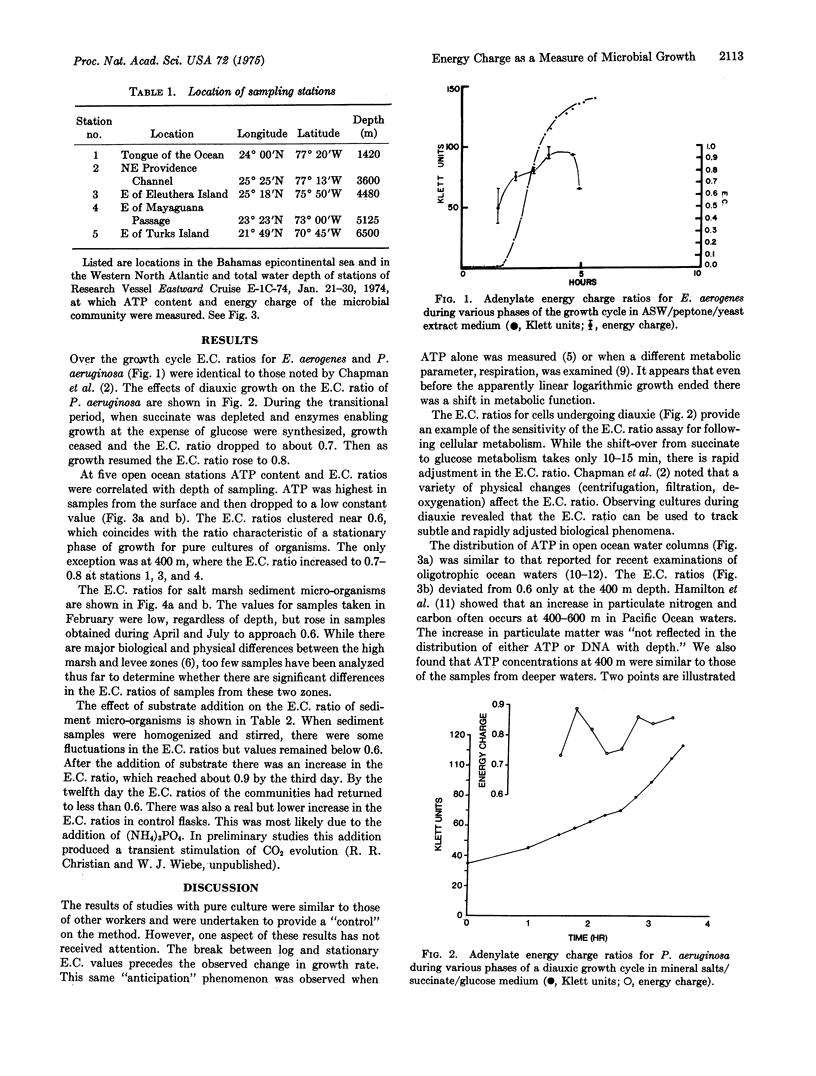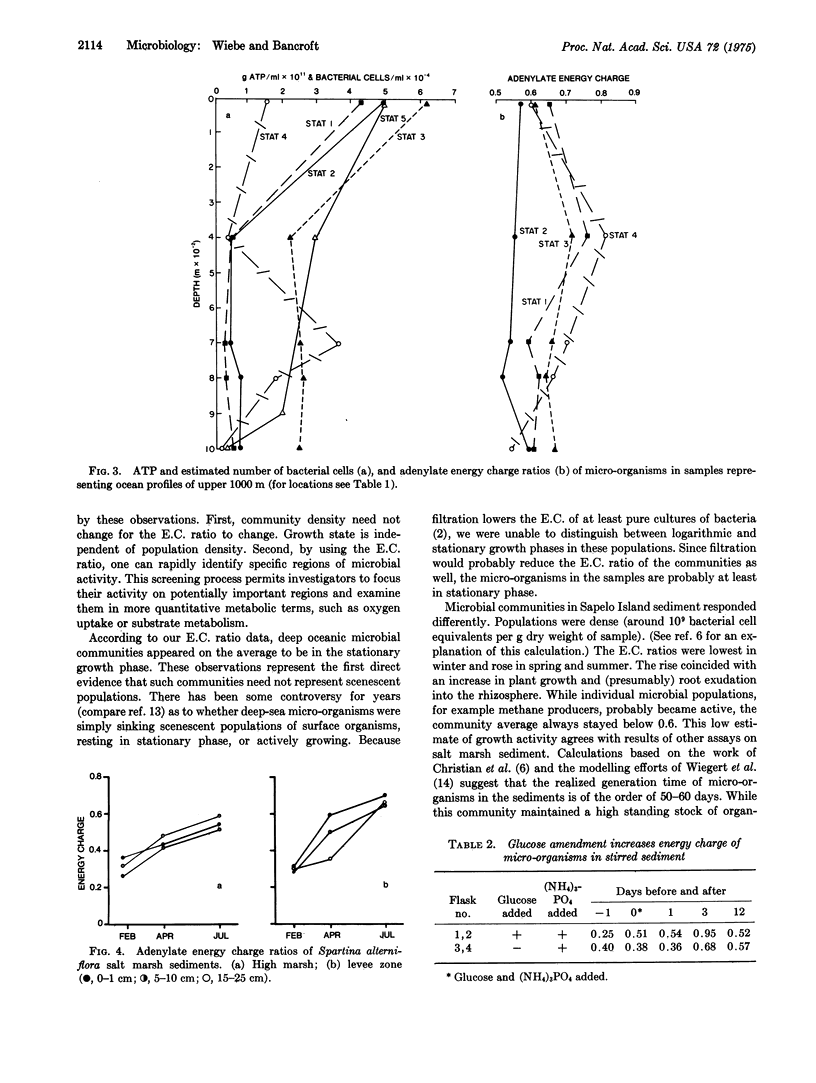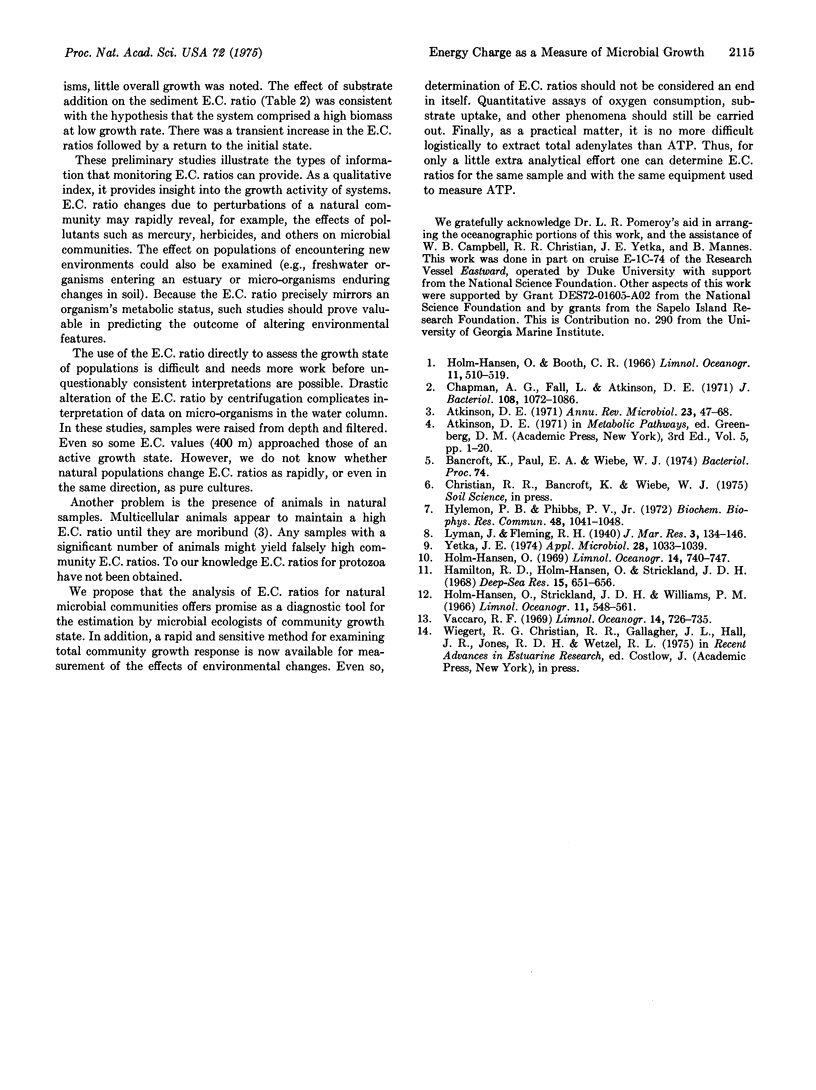Abstract
Measurement of the adenylate energy charge ratio is proposed as a means of determining the growth state of natural microbial communities and the effect of environmental changes on them. Observations on microbial cultures and on natural microbial populations from the Western North Atlantic Ocean water and from sediments of a costal salt marsh show that energy charge measurements do show the metabolic state of communities as well as species populations.
Full text
PDF



Selected References
These references are in PubMed. This may not be the complete list of references from this article.
- Atkinson D. E. Regulation of enzyme function. Annu Rev Microbiol. 1969;23:47–68. doi: 10.1146/annurev.mi.23.100169.000403. [DOI] [PubMed] [Google Scholar]
- Chapman A. G., Fall L., Atkinson D. E. Adenylate energy charge in Escherichia coli during growth and starvation. J Bacteriol. 1971 Dec;108(3):1072–1086. doi: 10.1128/jb.108.3.1072-1086.1971. [DOI] [PMC free article] [PubMed] [Google Scholar]
- Hylemon P. B., Phibbs P. V., Jr Independent regulation of hexose catabolizing enzymes and glucose transport activity in Pseudomonas aeruginosa. Biochem Biophys Res Commun. 1972 Sep 5;48(5):1041–1048. doi: 10.1016/0006-291x(72)90813-3. [DOI] [PubMed] [Google Scholar]
- Yetka J. E., Wiebe W. J. Ecological application of antibiotics as respiratory inhibitors of bacterial populations. Appl Microbiol. 1974 Dec;28(6):1033–1039. doi: 10.1128/am.28.6.1033-1039.1974. [DOI] [PMC free article] [PubMed] [Google Scholar]


